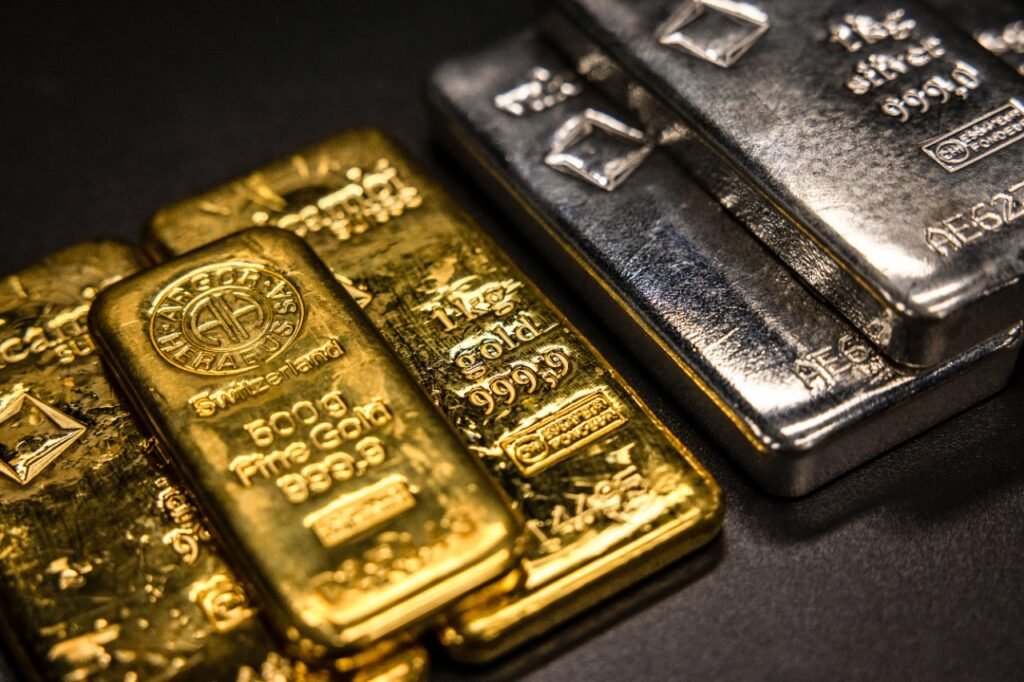Performance driven by Federal Reserve rate policy
The Federal Reserve’s (Fed) monetary policy stance remains a crucial driver for precious metals prices. Market expectations of future rate cuts have provided significant tailwinds for precious metals. The bond futures market is pricing in 92% probability for a rate cut in September, and a 85% chance of two or more cuts by the end of the year, with Fed officials noting that risks of higher unemployment and inflation have risen.
Lower interest rates reduce the opportunity cost of holding non-yielding assets like gold and silver. When central banks cut rates, the respective currency becomes less attractive, redirecting investments toward precious metals as alternative stores of value.
US job data this week, including the Job Openings and Labour Turnover Survey (JOLTS) results tonight and the non-farm payrolls report due Friday, will play a critical role in shaping the monetary policy path ahead.
Geopolitical uncertainties fuel safe-haven demand
Heightened geopolitical risks continue to provide substantial support for precious metals prices. The sharp rally this year has been propelled by President Trump’s tariffs, urging investors to seek refuge in tangible assets that maintain value during periods of policy uncertainty.
Trade tensions between the US and China add another layer of uncertainty. President Trump’s focus on tariffs has created additional market volatility, with investors seeking refuge in tangible assets that maintain value during periods of policy uncertainty. With the federal appeals court’s ruling most of the tariffs illegal, investors are even more puzzled on what this entails for the US as tariff revenues are at stake while the bridges with allies have already been burnt.
Another wildcard that may change the geopolitical picture is the ongoing conflicts between Russia and Ukraine. There has been little progress made on resolving the conflict since the talk between Trump and Putin. A de-escalation in the conflict may reduce interests for precious metals.
US dollar’s status questioned
Recent political developments have raised concerns about Federal Reserve independence. The dismissal of Fed Governor Lisa Cook over alleged misconduct created uncertainty about policy stability, causing the US dollar index to slip and supporting precious metals prices.
Mounting government debts have also reduced the dollar’s appeal as a store of value given the fiscal instability. The US Dollar index (DXY) declined 9% so far this year and has been a significant catalyst for precious metals strength.
In a recent survey conducted by the World Gold Council, 73% of the central banks respondents expect to reduce US dollar reserves in the next five years while 76% anticipate to increase gold reserves. Central bank demands remain strong with 123 tonnes of net purchases in the first half of 2025.
Strong investment demand drives prices higher
Silver investment demand through physical silver and ETPs is forecast to rise 9% in 2025 compared to 2024 according to the Silver Institute. Retail investors are increasingly viewing silver as an alternative to gold, attracted by its lower entry price and industrial applications. This dual appeal as both a monetary and industrial metal makes silver a unique asset class to invest in.
Investment demand for gold is also robust. Global physically-backed gold exchange-traded funds (ETF) attracted over $3 billion net inflows last week, which marks the strongest weekly inflows since mid-April.
Figure 2: Global gold ETF flows

